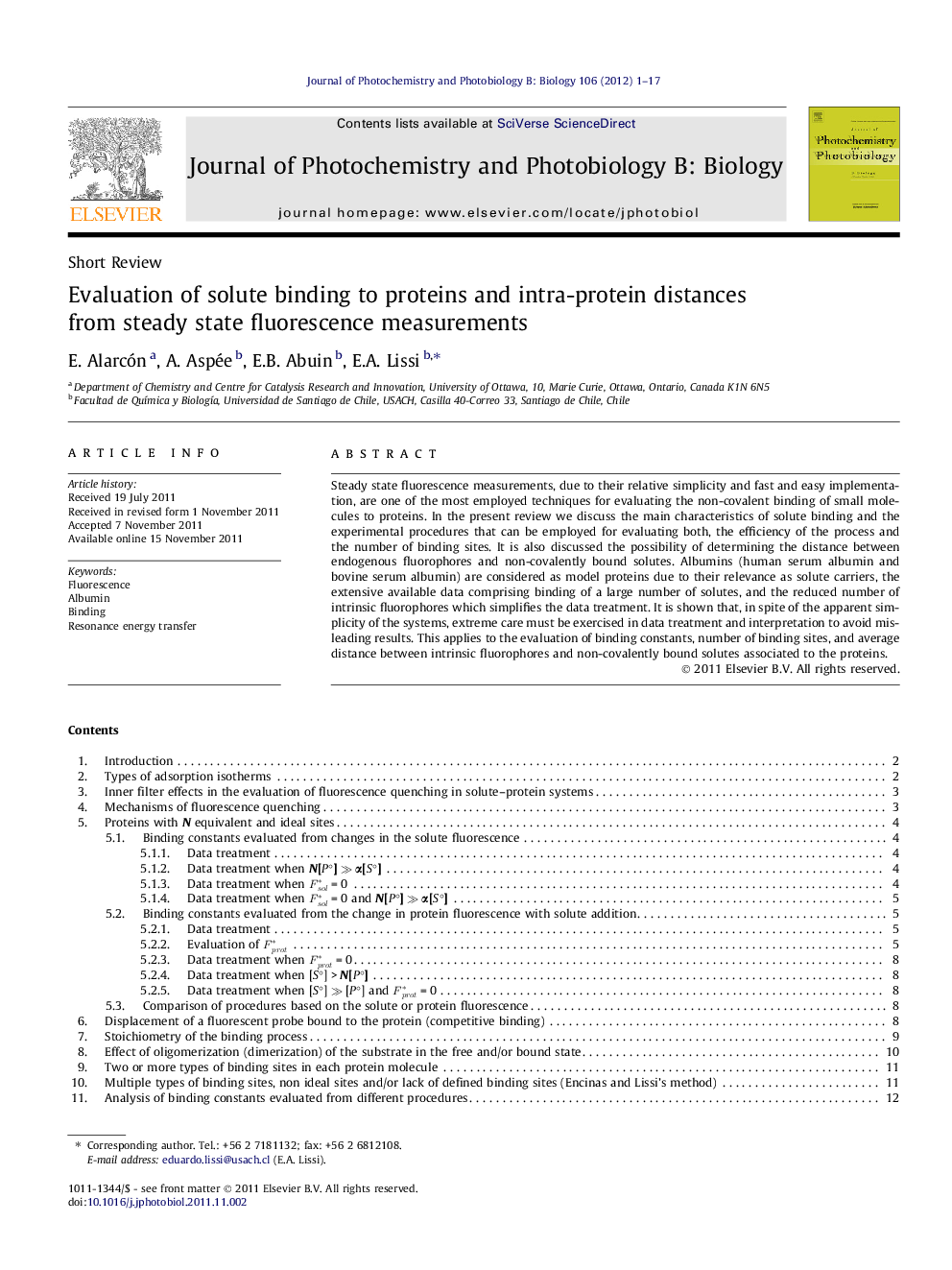| Article ID | Journal | Published Year | Pages | File Type |
|---|---|---|---|---|
| 30826 | Journal of Photochemistry and Photobiology B: Biology | 2012 | 17 Pages |
Steady state fluorescence measurements, due to their relative simplicity and fast and easy implementation, are one of the most employed techniques for evaluating the non-covalent binding of small molecules to proteins. In the present review we discuss the main characteristics of solute binding and the experimental procedures that can be employed for evaluating both, the efficiency of the process and the number of binding sites. It is also discussed the possibility of determining the distance between endogenous fluorophores and non-covalently bound solutes. Albumins (human serum albumin and bovine serum albumin) are considered as model proteins due to their relevance as solute carriers, the extensive available data comprising binding of a large number of solutes, and the reduced number of intrinsic fluorophores which simplifies the data treatment. It is shown that, in spite of the apparent simplicity of the systems, extreme care must be exercised in data treatment and interpretation to avoid misleading results. This applies to the evaluation of binding constants, number of binding sites, and average distance between intrinsic fluorophores and non-covalently bound solutes associated to the proteins.
